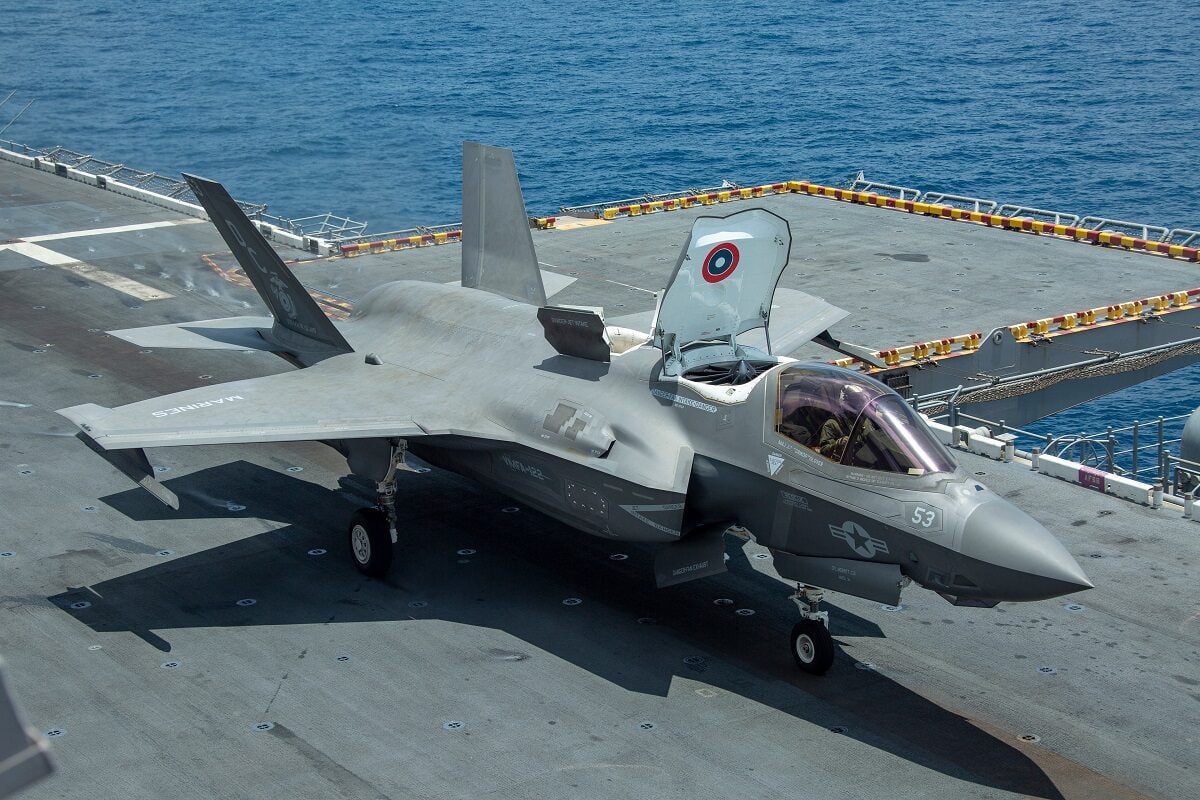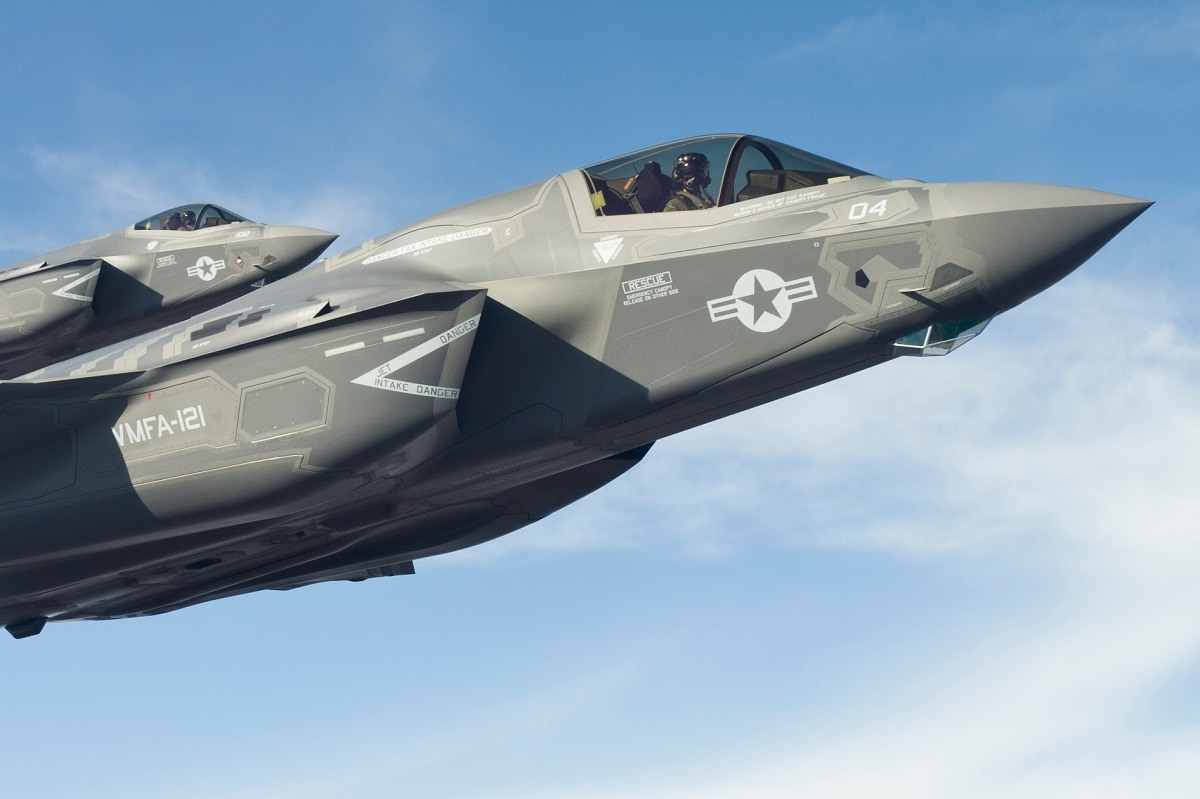The Royal Navy’s flagship aircraft carrier HMS Queen Elizabeth is making a port-of-call visit to the U.S. Navy’s Yokosuka Naval Base in Japan this week, and that follows recent interoperability exercises in the Philippine Sea late last month. Aircraft from the U.S. Navy’s Nimitz-class aircraft carrier USS Carl Vinson (CVN-70) took part in the joint exercises with U.S. Marine Corps and Royal Air Force F-35B Lightning II Joint Strike Fighters from the U.K. Royal Navy’s Queen Elizabeth Carrier Strike Group 21 (CSG 21), the Navy announced.
Four Navy F-35C aircraft from Strike Fighter Squadron (VFA) 147; five F/A-18E/F Super Hornets, assigned to Strike Fighter Squadrons (VFA) 2 and 192; two EA-18G Growlers, from Electronic Attack Squadron (VAQ) 136; and one E-2D Advanced Hawkeye, from the “Black Eagles” of Airborne Command and Control Squadron (VAW) 113 participated in the drills, in addition to aircraft from CSG 21, USNI News reported.
The aircraft from the Royal Navy flagship carrier also included two U.S. F-35Bs from Marine Fighter Attack Squadron 211 “Wake Island Avengers,” and two F-35Bs from U.K. Royal Air Force 617 Squadron “The Dambusters.”
The exercise involving the carrier-based aircraft was also one of the largest deployed collections of the fifth-generation Lockheed Martin F-35 Lightning II to date. Both the U.S. and UK have begun to operate their respective F-35s in the Western Pacific, while Marine F-35Bs embarked on the American Amphibious Ready Group were also operating in the region.
USS Carl Vinson had arrived at Fleet Activities Yokosuka on Aug. 28 for a scheduled port visit, as the Carl Vinson Carrier Strike Group (CVCSG) had been deployed for the Western Pacific earlier in the month, and took part in the recent Large Scale Exercise 2021 – a live and virtual globally-integrated exercise that span multiple fleets.
“Vinson is the first carrier to accommodate a mix of 4th and 5th generation strike fighters, providing unprecedented lethality and survivability and ensuring the Navy team can operate and win in contested battlespace now and well into the future,” Capt. Tommy Locke, commander, Carrier Air Wing (CVW) 2 said in a statement at the time of the Vinson’s deployment. “Integrating the new aircraft has truly been a team effort and using these new tools and technology—new sets of multispectral sensors and the information they provide—will increase lethality and survivability of the air wing and strike group. We plan on leveraging recently established tactics, techniques and procedures and developing innovative ways to use the new technologies to enhance our combined warfighting efforts.”
CVCSG consists of the Vinson, cruiser USS Lake Champlain (CG-57) and destroyers USS Dewey (DDG-105), USS O’Kane (DDG-77), USS Michael Murphy (DDG-112), USS Chafee (DDG-90) and USS Stockdale (DDG-106). The strike group is expected to conduct additional exercises with the UK’s Carrier Strike Group 21 (CSG21), which had completed a three-day exercise with the Republic of Korean Navy (ROKN) before making its port visit to Japan.
The third Nimitz-class carrier in service with the United States Navy, the nuclear-powered USS Carl Vinson was launched in 1980 and entered service in 1983. As with other carriers in her class, CVN-70 can carry more than 65 fixed and rotary-wing aircraft, while she can travel more than 5,000 nautical miles in less than 7 days in support of national tasking. Last September, the carrier completed several certifications for the F-35C and earlier this year became the first aircraft carrier equipped to support both the F-35C Lighting II jet fighter and CMV-22 Osprey aircraft.
CSG21 consists of carrier HMS Queen Elizabeth (R08), destroyer HMS Defender (D36), frigates HMS Kent (F78) and HMS Richmond (F239), Royal Fleet Auxiliary’s RFA Fort Victoria (A387) and RFA Tidespring (A136), an Astute-class submarine, as well as the Dutch frigate HNLMS Evertsen (F805), and American destroyer USS The Sullivans (DDG-68).

210408-M-UY835-1014 SOUTH CHINA SEA (April 8, 2021) A U.S. Marine Corps F-35B Lightning II assigned to Marine Medium Tiltrotor Squadron 164 (Reinforced), 15th Marine Expeditionary Unit, takes off from the flight deck of the amphibious assault ship USS Makin Island (LHD 8). The Makin Island Amphibious Ready Group and embarked 15th MEU are operating in the U.S. 7th Fleet area of operations to enhance interoperability with allies and partners and serve as a ready response force to defend peace and stability in the Indo-Pacific region. (U.S. Marine Corps photo by Cpl. Patrick Crosley)
Peter Suciu is a Michigan-based writer who has contributed to more than four dozen magazines, newspapers and websites. He regularly writes about military small arms, and is the author of several books on military headgear including A Gallery of Military Headdress, which is available on Amazon.com.

